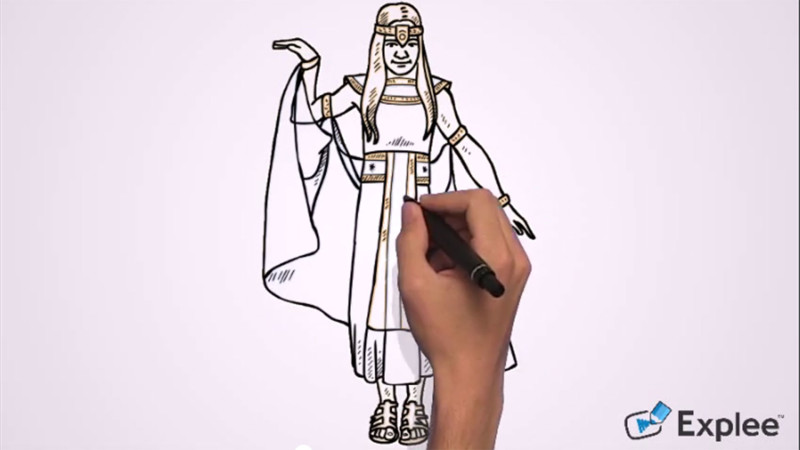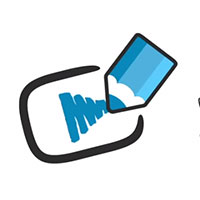 Explee is a video scribing tool that simulates the effect of sketchnoting and allows students to find and add images, text, video clips or audio to a workspace. “This is a great project creation tool for your students,” Langenhorst said. “And as we all know, it’s the creating, that upper echelon of learning, that lets kids really get learning.”
Explee is a video scribing tool that simulates the effect of sketchnoting and allows students to find and add images, text, video clips or audio to a workspace. “This is a great project creation tool for your students,” Langenhorst said. “And as we all know, it’s the creating, that upper echelon of learning, that lets kids really get learning.”
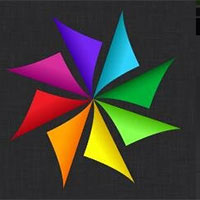 MackinVIA is a free database of primary sources. “It’s given us the ability to look at topics from several different perspectives because of the resources available to us,” Langenhorst said. She also likes the “backpack” feature, which allows students to save books or excerpts that they want to come back to and can be great way to keep track of research materials. And, crucially, the service offers many digital copies of the same books or articles, which has eliminated any fighting over books that might have taken place around big research projects in the past.
MackinVIA is a free database of primary sources. “It’s given us the ability to look at topics from several different perspectives because of the resources available to us,” Langenhorst said. She also likes the “backpack” feature, which allows students to save books or excerpts that they want to come back to and can be great way to keep track of research materials. And, crucially, the service offers many digital copies of the same books or articles, which has eliminated any fighting over books that might have taken place around big research projects in the past.
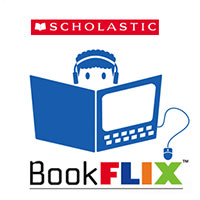 BookFlix is a tool Langenhorst uses to get lower elementary level students interested in non-fiction. The app pairs a piece of fiction with a non-fiction article so that when a student finishes reading a story about puppies, for example, there’s an explanatory article about dog breeds to follow up. TrueFlix is the version for older kids.
BookFlix is a tool Langenhorst uses to get lower elementary level students interested in non-fiction. The app pairs a piece of fiction with a non-fiction article so that when a student finishes reading a story about puppies, for example, there’s an explanatory article about dog breeds to follow up. TrueFlix is the version for older kids.
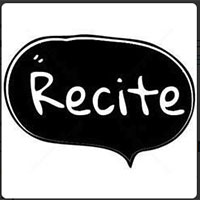 Recite.com allows students to type in a quote and create a stylized version. “You can save this slide and put it in anything - like a PowerPoint or an iMovie,” Langenhorst said. “This can be a great way for kids to pick out important pieces of information.”
Recite.com allows students to type in a quote and create a stylized version. “You can save this slide and put it in anything - like a PowerPoint or an iMovie,” Langenhorst said. “This can be a great way for kids to pick out important pieces of information.”
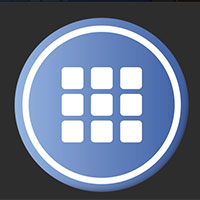 Symbaloo is an organizational tool Langenhorst has found to be helpful in libraries and social studies classes, especially with younger students. The desktop or mobile app helps keep track of websites students are often using, displaying them as an easy-click icon. Kids can quickly click on the application they need, eliminating slow typing and saving a lot of class time. It’s also possible to make a Symbaloo and make it the homepage on class computers. “You could even do tabs for different chapters to keep all your content organized,” Langenhorst said.
Symbaloo is an organizational tool Langenhorst has found to be helpful in libraries and social studies classes, especially with younger students. The desktop or mobile app helps keep track of websites students are often using, displaying them as an easy-click icon. Kids can quickly click on the application they need, eliminating slow typing and saving a lot of class time. It’s also possible to make a Symbaloo and make it the homepage on class computers. “You could even do tabs for different chapters to keep all your content organized,” Langenhorst said.
 Lucidchart is a Chrome add-on that Langenhorst’s teachers often use in conjunction with other Google products, like Docs or Slides. “There are a variety of templates to create things like timelines or organizational webs,” Langenhorst said. She’s found Lucidchart to work well when students are working individually, preparing materials for an essay, for example. They can put all their resources on a timeline or in a brainstorming web.
Lucidchart is a Chrome add-on that Langenhorst’s teachers often use in conjunction with other Google products, like Docs or Slides. “There are a variety of templates to create things like timelines or organizational webs,” Langenhorst said. She’s found Lucidchart to work well when students are working individually, preparing materials for an essay, for example. They can put all their resources on a timeline or in a brainstorming web.
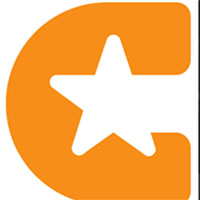 iCivics is a free web-based resource that brings interactive and engaging Civics content to classrooms in the form of games, lesson plans and other digital content. Founded by Sandra Day O'Connor, iCivics puts students in civic roles and asks them to solve real-world issues. The games have great audio, decent video and feel like commercial games. “It is phenomenal,” Langenhorst said. “I can’t wait to share this with more people.”
iCivics is a free web-based resource that brings interactive and engaging Civics content to classrooms in the form of games, lesson plans and other digital content. Founded by Sandra Day O'Connor, iCivics puts students in civic roles and asks them to solve real-world issues. The games have great audio, decent video and feel like commercial games. “It is phenomenal,” Langenhorst said. “I can’t wait to share this with more people.”
 Infogr.am is one of many free tools available to make infographics. Langenhorst prefers it because students have a lot of choice over stylistic changes to make it their own.
Infogr.am is one of many free tools available to make infographics. Langenhorst prefers it because students have a lot of choice over stylistic changes to make it their own.
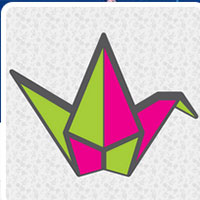 Padlet is a digital bulletin board that has been around for several years and is often cited as a favorite among educators. It is free for a trial period and then five dollars per teacher after that. “The thing I love about Padlet is you can work on things simultaneously with other people,” Langenhorst said. In a social studies context, she likes the interactive maps and the opportunity to build interactive timelines. She even uses Padlet with new teachers to help them organize all the content that can overwhelm new hires.
Padlet is a digital bulletin board that has been around for several years and is often cited as a favorite among educators. It is free for a trial period and then five dollars per teacher after that. “The thing I love about Padlet is you can work on things simultaneously with other people,” Langenhorst said. In a social studies context, she likes the interactive maps and the opportunity to build interactive timelines. She even uses Padlet with new teachers to help them organize all the content that can overwhelm new hires.
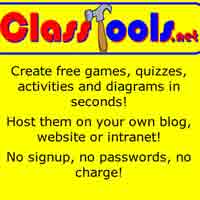 ClassTools.net is a good tool for high school. One of the resources on the site is Fakebook, a made up version of Facebook that allows students to change the profile picture, name, info and post as the character they’ve developed. “Very quickly you can take this fake Facebook page and turn it into something that seems as if it was created by a historic figure,” Langenhorst said. It requires research to prepare a page like that and has the added benefit of allowing different students acting as historical characters to post on one another’s walls. “It’s a great way for kids to show they understand different interactions that may have happened in history,” Langenhorst said.
ClassTools.net is a good tool for high school. One of the resources on the site is Fakebook, a made up version of Facebook that allows students to change the profile picture, name, info and post as the character they’ve developed. “Very quickly you can take this fake Facebook page and turn it into something that seems as if it was created by a historic figure,” Langenhorst said. It requires research to prepare a page like that and has the added benefit of allowing different students acting as historical characters to post on one another’s walls. “It’s a great way for kids to show they understand different interactions that may have happened in history,” Langenhorst said.
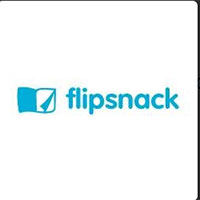 Flipsnack allows students to create a short interactive book (15 pages on a free account). Langenhorst likes Flipsnack better than other similar products because it simulates the sound of turning pages and feels like she is actually flipping through a book. “Our kids have been using this in history to pull in different projects they’ve done,” Langenhorst said. “It serves as a portfolio for them.”
Flipsnack allows students to create a short interactive book (15 pages on a free account). Langenhorst likes Flipsnack better than other similar products because it simulates the sound of turning pages and feels like she is actually flipping through a book. “Our kids have been using this in history to pull in different projects they’ve done,” Langenhorst said. “It serves as a portfolio for them.”
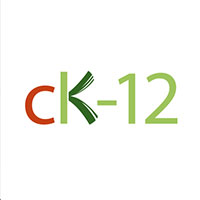 CK-12 Flexbooks allow teachers on a tight budget to either create their own content or look at content that’s already added. The resources are free and high quality, so teachers can pick what’s applicable to their unit or needs and package them in one neat Flexbook.
CK-12 Flexbooks allow teachers on a tight budget to either create their own content or look at content that’s already added. The resources are free and high quality, so teachers can pick what’s applicable to their unit or needs and package them in one neat Flexbook.
 Livebinders are basically digital three-ring binders, great for keeping track of stuff that might otherwise be printed and stuck in a drawer somewhere. It offers some pre-made tools for teachers to choose from and can be a great way to present information to substitute teachers or to parents. The pre-made history binders are often made by other teachers and are free to look at for ideas. Many are even free to copy, so teachers don’t have to replicate work an educator somewhere else in the country or world has already done. “The amount of information within a Livebinder is tremendous,” Langenhorst said. The Livebinder can be organized by tabs and shows all the topics covered under each tab.
Livebinders are basically digital three-ring binders, great for keeping track of stuff that might otherwise be printed and stuck in a drawer somewhere. It offers some pre-made tools for teachers to choose from and can be a great way to present information to substitute teachers or to parents. The pre-made history binders are often made by other teachers and are free to look at for ideas. Many are even free to copy, so teachers don’t have to replicate work an educator somewhere else in the country or world has already done. “The amount of information within a Livebinder is tremendous,” Langenhorst said. The Livebinder can be organized by tabs and shows all the topics covered under each tab.
 Tubechop is a quick and easy way to cut down a YouTube video to only show the small portion appropriate or interesting for a class activity. The program creates a new link teachers can send to students.
Tubechop is a quick and easy way to cut down a YouTube video to only show the small portion appropriate or interesting for a class activity. The program creates a new link teachers can send to students.
 Socrative has long been a favorite in many classrooms for the easy formative assessment it offers. In social studies, Langenhorst notes, it’s particularly important to make sure students understand how events are building upon one another and influencing what comes next. The app offers exit tickets and quick clicker services, but also a “space race” that Langenhorst likes.
Socrative has long been a favorite in many classrooms for the easy formative assessment it offers. In social studies, Langenhorst notes, it’s particularly important to make sure students understand how events are building upon one another and influencing what comes next. The app offers exit tickets and quick clicker services, but also a “space race” that Langenhorst likes.
In a space race, students are randomly assigned a color, and as they answer the questions in the quiz, rockets in those colors advance. Kids are working as a team, but they don’t know who else is on their team. “It is such an easy, phenomenal way to get kids excited about their learning,” Langenhorst said. “I’ve got 12th graders who are still excited about space race.” Student responses with Socrative can go directly into a gradebook, or just offer some insight into whether students are picking up on the key ideas.
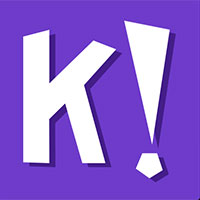 Kahoot.it creates interactive quizzes that have a gameshow quality to them. “If your kids are like ours, and they’re always wanting to interact and be competitive, this is great,” Langenhorst said.
Kahoot.it creates interactive quizzes that have a gameshow quality to them. “If your kids are like ours, and they’re always wanting to interact and be competitive, this is great,” Langenhorst said.
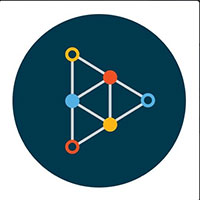 Educreations is another presentation tool that can aid in flipping the classroom or letting kids explain their thinking. “Educreations allows students to record their voice, draw and import pictures,” Langenhorst said. She often uses this tool to spot-check understanding. The free version limits how many Educreations can be made on one account, but teachers in Rock Valley just change old ones. They don’t pay for the premium version and still get a lot of use out of what’s accessible free of charge.
Educreations is another presentation tool that can aid in flipping the classroom or letting kids explain their thinking. “Educreations allows students to record their voice, draw and import pictures,” Langenhorst said. She often uses this tool to spot-check understanding. The free version limits how many Educreations can be made on one account, but teachers in Rock Valley just change old ones. They don’t pay for the premium version and still get a lot of use out of what’s accessible free of charge.
 The iPad app Nearpod is great in one-to-one classrooms of little kids. It lets the teacher control how and when the screen advances. Little kids often want to click or swipe on everything, but Nearpod keeps them on task.
The iPad app Nearpod is great in one-to-one classrooms of little kids. It lets the teacher control how and when the screen advances. Little kids often want to click or swipe on everything, but Nearpod keeps them on task.
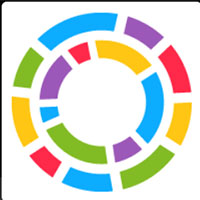 Langenhorst uses Blendspace to help teachers find and keep track of their resources. Her district offers individualized professional development that teachers design it for themselves. Blendspace allows them to save sites to one location and access them all. Sites are then easy to drag and drop to reorder. “I love the idea of using this for students who are absent,” Langenhorst said. “Get all your information in one place and share it out through email so the student has access to everything you did in class.”
Langenhorst uses Blendspace to help teachers find and keep track of their resources. Her district offers individualized professional development that teachers design it for themselves. Blendspace allows them to save sites to one location and access them all. Sites are then easy to drag and drop to reorder. “I love the idea of using this for students who are absent,” Langenhorst said. “Get all your information in one place and share it out through email so the student has access to everything you did in class.”
 The PowToon web-based app allows students to make animated videos. They can choose music and make it look fairly professional without too much technical know-how. “This would be a great way to reenact something,” Langenhorst said.
The PowToon web-based app allows students to make animated videos. They can choose music and make it look fairly professional without too much technical know-how. “This would be a great way to reenact something,” Langenhorst said.
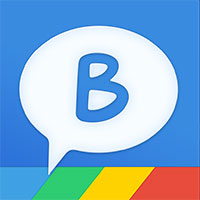 Bitstrips has been around for a long time, but is still a “goodie” in Langenhorst’s opinion. It's a tool that allows students to summarize or display what they know by choosing characters and constructing scenes. “When you have all these different tools, you just have to think about what standards you are trying to meet and choose based on that,” Langenhorst said.
Bitstrips has been around for a long time, but is still a “goodie” in Langenhorst’s opinion. It's a tool that allows students to summarize or display what they know by choosing characters and constructing scenes. “When you have all these different tools, you just have to think about what standards you are trying to meet and choose based on that,” Langenhorst said.
 Make Beliefs Comix is another summarizing tool, but is especially good for bilingual students because resources are displayed in multiple languages.
Make Beliefs Comix is another summarizing tool, but is especially good for bilingual students because resources are displayed in multiple languages.
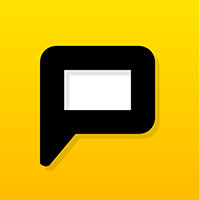 Pixton is a creation tool for older students. Kids can create characters from scratch, put them into a comic and animate them to tell a story, explain an idea or summarize something.
Pixton is a creation tool for older students. Kids can create characters from scratch, put them into a comic and animate them to tell a story, explain an idea or summarize something.
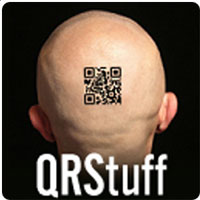 QR Stuff is an app many teachers in Rock Valley use when creating posters. “QR codes can lead to so much more,” Langenhorst said. One student used a QR code on a project about Jefferson to take people on a virtual tour of Monticello. Teachers or students can open up a whole world of resources on the Internet by including QR codes in a poster project.
QR Stuff is an app many teachers in Rock Valley use when creating posters. “QR codes can lead to so much more,” Langenhorst said. One student used a QR code on a project about Jefferson to take people on a virtual tour of Monticello. Teachers or students can open up a whole world of resources on the Internet by including QR codes in a poster project.
 Euronews is great for social studies because it gives the news from all over the world in many languages. It’s a great resource for finding multiple perspectives on a historic event.
Euronews is great for social studies because it gives the news from all over the world in many languages. It’s a great resource for finding multiple perspectives on a historic event.
 The Newseum Digital Classroom, part of the Washington DC museum, allows students to look up the real time reporting for big historic events. The app has papers from all over the world and can be a great glimpse back through history.
The Newseum Digital Classroom, part of the Washington DC museum, allows students to look up the real time reporting for big historic events. The app has papers from all over the world and can be a great glimpse back through history.
 Newsela is a non-fiction and current events databases. The app allows teachers to see how well students read something and how much they understood through mini quizzes. There’s a lot of choice available for students, but teachers can also assign readings.
Newsela is a non-fiction and current events databases. The app allows teachers to see how well students read something and how much they understood through mini quizzes. There’s a lot of choice available for students, but teachers can also assign readings.
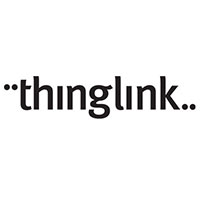 Thinglink makes pictures interactive. It is a desktop program or iPad app. Fourth graders in Rock Valley are using a collage creator to pull pictures of their region into a messy array. Then they use Thinglink to link to lots of other resources and sites. “One of the teachers I’m doing this with is a beginner to Internet use and some of these tools, and he said it was very easy to use,” Langenhorst said.
Thinglink makes pictures interactive. It is a desktop program or iPad app. Fourth graders in Rock Valley are using a collage creator to pull pictures of their region into a messy array. Then they use Thinglink to link to lots of other resources and sites. “One of the teachers I’m doing this with is a beginner to Internet use and some of these tools, and he said it was very easy to use,” Langenhorst said.
 Every educator in the digital world needs a bookmarking tool to help keep track of resources, ideas and sources for students. Langenhorst prefers Draggo because she can stores sites, categorize them and they are easy to share with other people, including students. “I can have a different category for different kids and different projects,” Langenhorst said. Other popular bookmarking tools are Diggo and Pocket.
Every educator in the digital world needs a bookmarking tool to help keep track of resources, ideas and sources for students. Langenhorst prefers Draggo because she can stores sites, categorize them and they are easy to share with other people, including students. “I can have a different category for different kids and different projects,” Langenhorst said. Other popular bookmarking tools are Diggo and Pocket.

